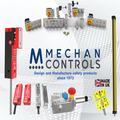
Posted to News on 13th Jun 2008, 13:47
Autodesk Inventor helps develop equipment for the Antarctic
The engineering team at British Antarctic Survey is using Autodesk Inventor - supplied Micro Concepts - to reduce the development time for specialist scientific equipment.
When your window of opportunity to get new equipment into a site for critical environmental research is just once a year, time is of the essence.
And so it is for the engineering team at British Antarctic Survey (BAS), a UK Government organisation responsible for undertaking the majority of Britain's scientific research on and around the Antarctic continent. The engineering team's remit is to produce ruggedised equipment for use in the Antarctic research and on its fleet of ships.
Key to delivering its vital support projects on time, and within limited Government budgets, is the engineering team's use of the latest technology. Specifically, it uses Autodesk Inventor to design and digitally prototype the products required for use in one of the most hostile environments on the planet.
Andy Tait is a mechanical design engineer at BAS, within technical services in the Antarctic and Marine Engineering Group. He explains: "We support the scientific research being carried out in the Antarctic, and support all of BAS's different divisions."
At any one time, Tait and his team could be working on half a dozen projects of varying complexity. Examples include a digital camera system to monitor sea ice activity, a tethered stake to measure the movement of ice over sediments in glacial streams, a star-pointing telescope to measure the ozone in the atmosphere, and an ice core drill capable of taking ice cores dating back tens of thousands of years.
Reasons for adopting Inventor
Tait worked in the Antarctic for his first two and a half years in the late 1980s. He then joined his current team, based in Cambridge in the UK. He comments: "They were using an application called RoboCAD at the time, but in 1994 we moved to AutoCAD because the previous software had some limitations when it came to sharing documents with other applications. As the industry standard, AutoCAD overcame this problem."
In 1997, the team moved onto Mechanical Desktop, before embracing Autodesk Inventor in 1999 with the purchase of three licences. The rest, according to Tait, is history.
Autodesk Inventor software is a dynamic 3D package enabling highly accurate and easy-to-visualise digital prototyping. The models it generates are accurate 3D digital presentations of the finished article that enable users to validate design and engineering data as they work. This minimises the need for physical prototypes and reduces the need for costly engineering changes that might otherwise emerge after the design has been sent to manufacturing.
Reuse and share data
Unlike non-standard design software, Inventor also gives designers the freedom to integrate existing 2D designs into their 3D design environment, making it easy to reuse and share both AutoCAD DWG files and 3D design data with other Autodesk manufacturing applications and their users.
Right first time
Tait says: "The 3D modelling aspect is a huge advantage in dealing with the scientists. They come to us with ideas of what they want but 2D drawings are very limited in being able to get across what the finished article will look like. With the 3D visualisation capability, which is very realistic and highly accurate, they can interact with us on the design at a much earlier stage, to check the size is what they had imagined, or the flexibility, for example.
"Sometimes it could be something simple, like the device being the wrong size to handle when wearing gloves, or that the device needs to be more modular and easier to assemble and take apart in the icy conditions. Having 3D has helped unbelievably. We can now call the model up and the scientists can investigate it and see how the components come together. Before, we had to make the item first and then the scientist might have said "Ah, it would have been better if we could have had X'."
The advantages translate very clearly into time and cost benefits, Tait says: "These factors are very important, as this is a Government organisation, so funding is always an issue for projects. The scientists need to be able to come up with estimates, too, to get projects approved. Inventor makes this much easier, and brings in projects much more cost-effectively, because there is no need for physical prototyping and yet our finished products are much closer to what the scientists need. We are now probably close to 40 per cent better at getting the product right first time, compared with before when we had to retrospectively improve a design further down the line.
"With Inventor, the speed of turnaround is very quick. It is much faster than it ever was with 2D AutoCAD. We can take a project from concept to delivery, even using subcontractors for manufacture, in just eight weeks. This can be the difference between getting something out to the Antarctic when it is needed or missing the window of opportunity for what could be another year. There are very few opportunities to get ships in and out of Antarctica."
In fact, it was only thanks to Inventor that Tait's team managed to turn around a very last-minute project to design a probe-based ground radar system, to be mounted on the front of a snowcat. Its purpose is to look for cracks on the snow surface and prevent the snowcat from plunging into a crevice. Tait explains: "This was an important project, but it came to us very late in the day. Yet we were able to get it right first time thanks to Inventor, and deliver the device with incredible speed."
Smaller file sizes
Tait also values the ability to store DWF drawing files, saying: "The ability to compress files is extremely useful, as we have limited download speeds when sending data to and from the Antarctic, so it is a great benefit to be able to reduce the file size."
He is grateful tot for the support of BAS's local Autodesk reseller, Micro Concepts: "They are very professional. We have been dealing with them for over ten years and the turnaround is very good on any problems that might arise. They are very supportive and do all our training. They have excellent facilities and the standard of education is extremely high.
"The solid modelling side, for us, is the way forward. Inventor grows in its capabilities every year, with the addition of new features such as finite element and stress analysis, and content centre environments that let you pick up components. It is a very exciting product.
"But what we love about Inventor is that it is photo-realistic. Not only does this help us get our models right first time, it enables the scientists to feature the devices in their presentations. With the financial restraints we are operating under, we can only produce one finished product, which then gets sent out to the Antarctic. But with Inventor, the scientists can demonstrate the product to help them explain their work when presenting their discoveries to the Science Institute at conferences and seminars."
Want the latest machine building news straight to your inbox? Become a MachineBuilding member for free today >>

















